Energy Self-Sufficient Systems
Energy self-sufficient systems are systems which perform their function with virtually no external support. They require no mains power supply, no communication, and no external computing. Autarkic embedded systems are operated by appropriate microcontroller systems and run on a highly optimised energy budget. They do not require new batteries and obtain the electrical energy that they need from sources in their environment such as light, heat, motion, or radio waves. Typically, they either function without any communication at all or via wireless links.
Energy self-sufficient systems
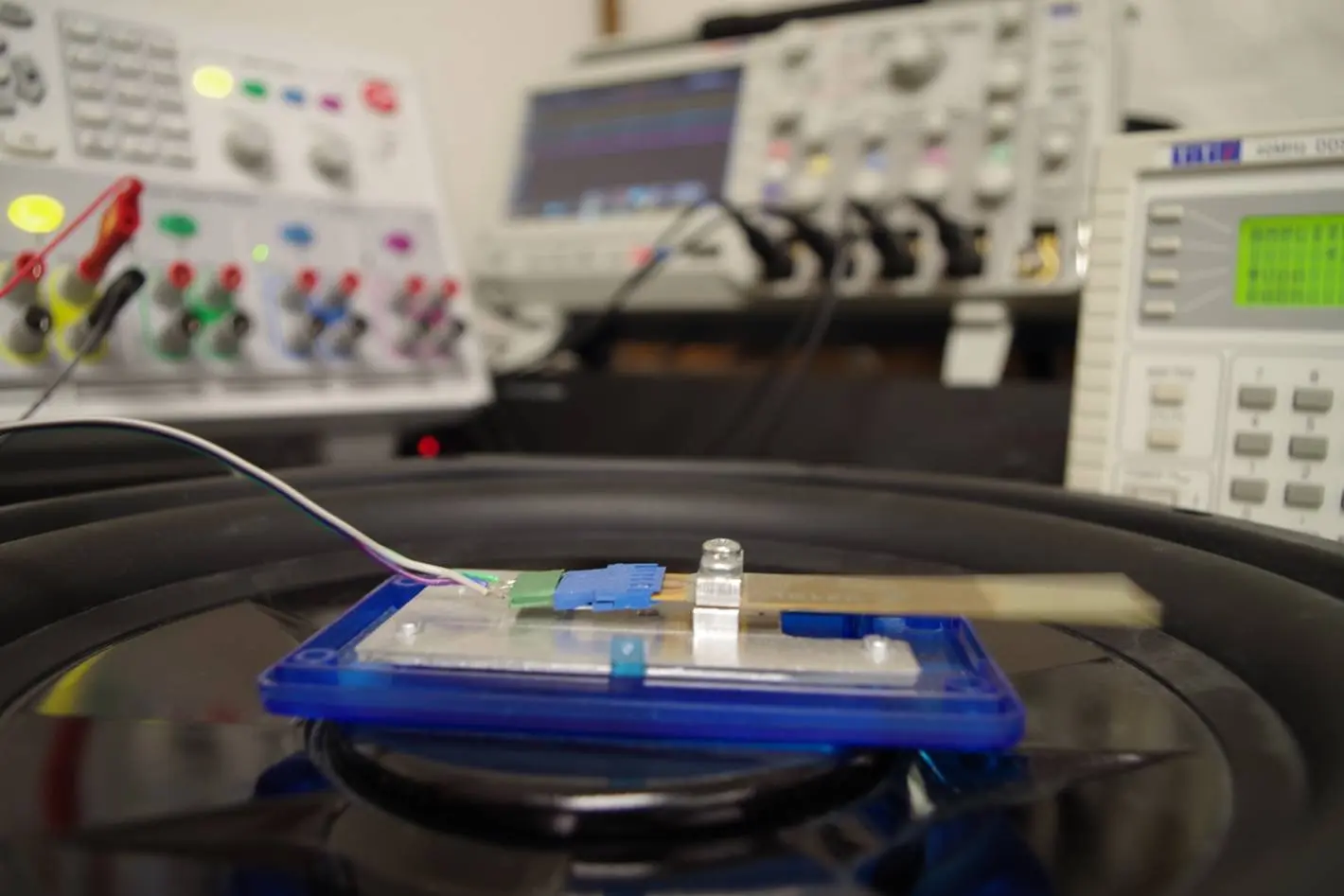
Energy self-sufficient systems collect the operating energy by energy harvesting. Designed for both longevity and maintenance free operation they communicate wirelessly or operate completely without communication. Autarkic systems are especially well suited for applications where wiring or maintenance (for example, battery replacement) is either impossible or uneconomic. Examples of typical applications are wireless sensor nodes or independent actuators. The use of energy harvesting technologies generates added value for existing applications and it enables new applications for embedded systems. Sensors or actuators can be realized as a completely energy self-sufficient system.
Design and Development of Autarkic Systems
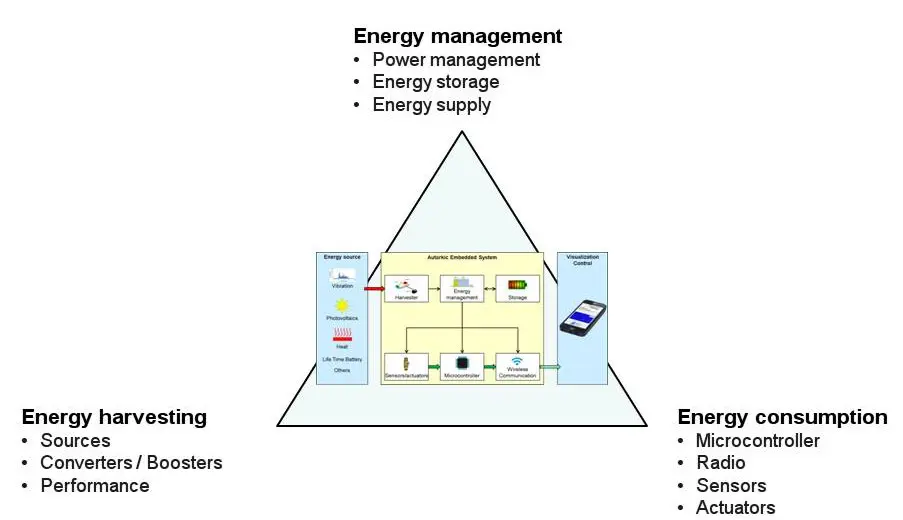
Autarkic systems are limited in power budget. The functionality and the uptime of the system are determined by the application and the available energy. This makes a complete system approach necessary which takes into account the three aspects of energy harvesting, energy management and energy consumption by the application. In addition to the system itself, the application and functionality must also be designed for energy harvesting.
Our Services
We take a systems approach to the development of autonomous systems which guarantees maximum benefit for our partners. We place special focus on the feasibility, stability, and efficiency of solutions. We produce results that place our industry partners in a position to begin risk-free product industrialization.
Our services include all steps for the development of autarkic systems:
- Application analysis
- Conceptual design of the overall system
- Selection of appropriate harvesting technology or harvester
- Development or selection of required boosters and converters
- Design and optimization of power management
- Development of ultra-low-power embedded systems with radio transmission and connected consumers
- Implementation of the software (microcontroller, radio transmission, receiver)
- Design and implementation of intelligent algorithms for minimizing energy consumption
Projects and Research Topics (Selection)
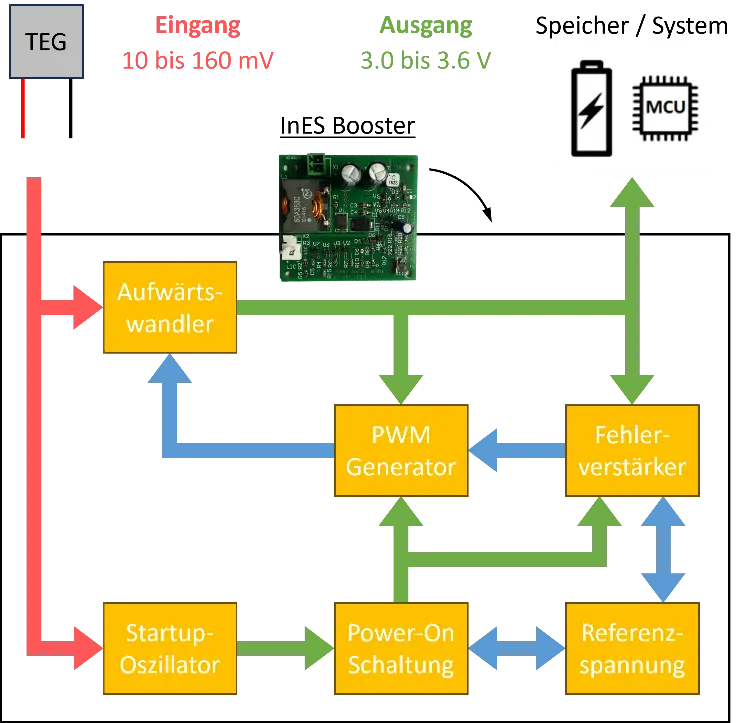
Efficient Boost Converter to Use Low Temperature Differences for Energy Harvesting
The newly developed boost converter for energy harvesting with thermoelectric generators (TEGs) starts efficiently at minimum input voltages of about 10 millivolts. Due to the two-stage design, it provides a regulated output voltage of 3.6 V even at low temperature differences at the TEG. The prototype delivers an output of 802 microwatts at the output at a temperature difference of 3 °C. The booster has an efficiency of 62%.
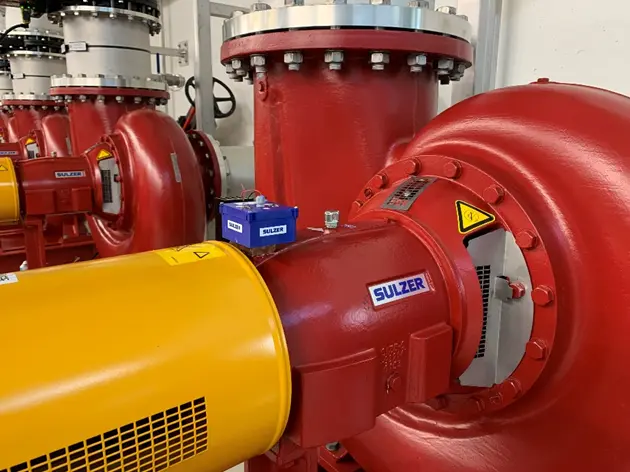
Energy Self-Sufficient Monitoring System with Edge Computing for Industrial Pumps
The self-sufficient surveillance system for industrial pumps combines edge computing with energy harvesting. The system obtains its energy entirely from the temperature difference between the pump housing and ambient air using a thermoelectric generator (TEG). Even from a temperature difference of 3 °C, sufficient energy can be collected to conduct regular complex analyses and perform all calculations directly on the device (on the edge).
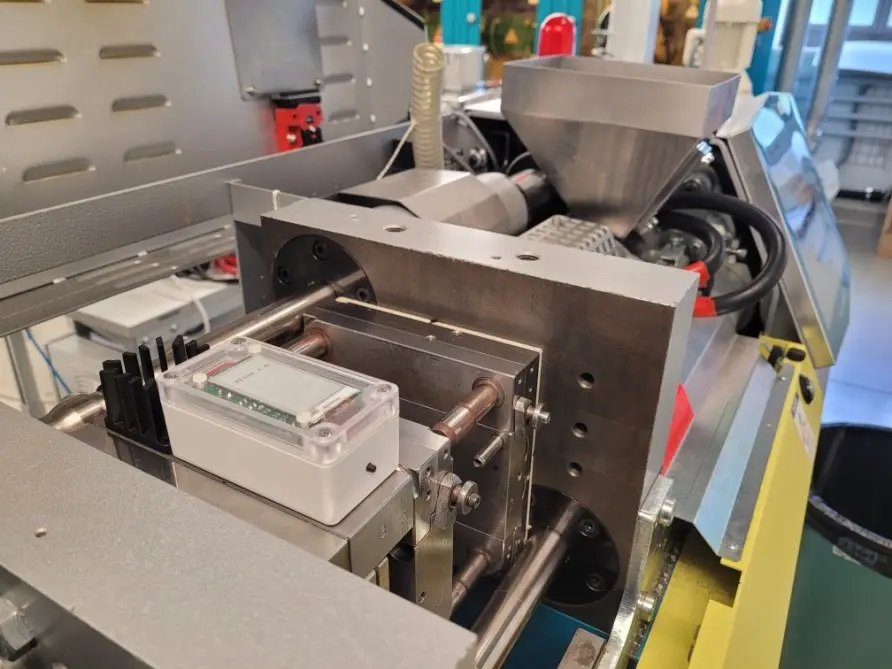
Electronic Tool Logbook for Permanent Tool Monitoring in Industrial Applications
The autonomous, energy-self-sufficient electronic tool logbook continuously processes and stores critical data and events for tooling and manufacturing, without requiring regular user interaction. It is designed for use in an industrial environment and works entirely without external power supply.
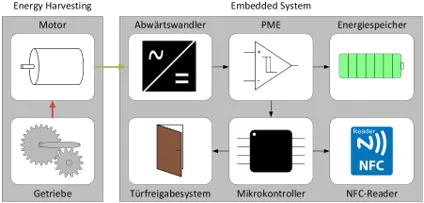
Access Control with Energy Harvesting using the Door Handle
The access control system developed at InES demonstrates a successful use of energy harvesting. The system converts the kinetic energy from operating a door handle into electrical energy. This approach enables battery free and wireless authentication using NFC tags as well as automated door unlocking. The prototype integrates a specially developed motor for energy generation and a voltage regulator for energy management. The system is an environmentally friendly and low-maintenance alternative to traditional electric locks.
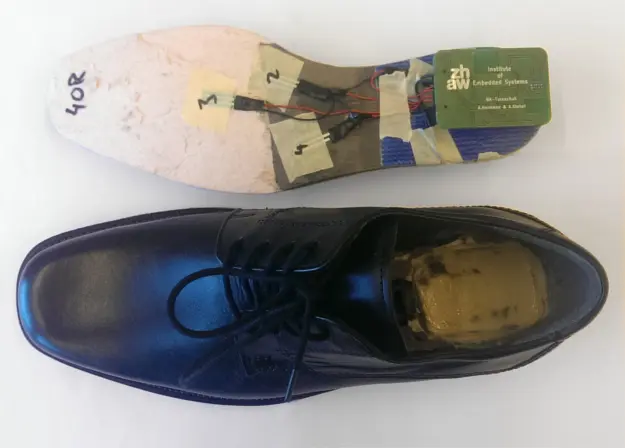
Intelligent Shoes with Energy Harvesting
The wearable harvests energy from the walking movement. It measures various data and sends it to a smartphone for visualization and further processing.
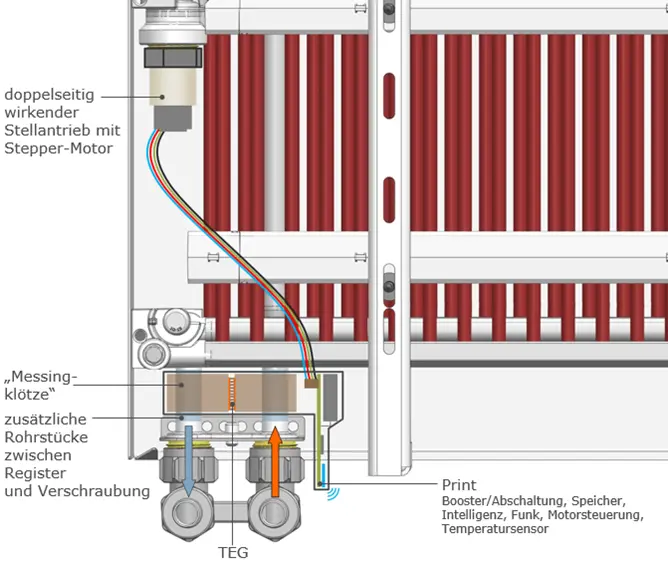
The self-sufficient heating valve uses a thermoelectric generator (TEG) and an optimized booster for energy harvesting.

Energy Autarkic Electronics for Ventilation Systems
The energy autarkic system measures environmental data and adjusts ventilation flaps. Energy is supplied from the air flow by means of energy harvesting.
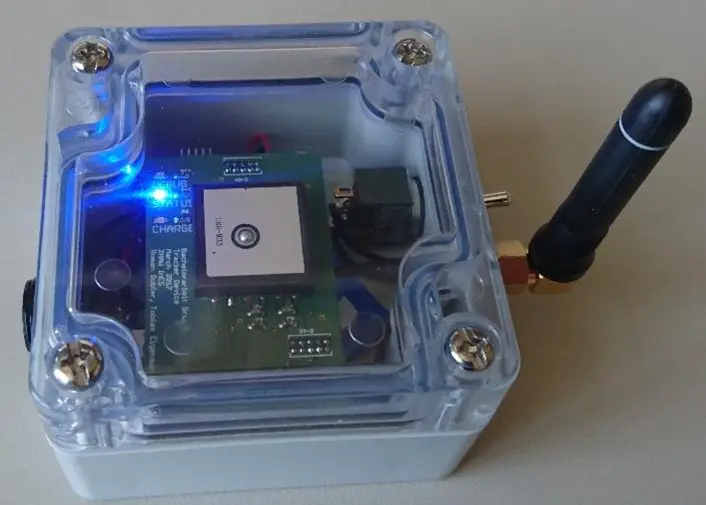
Real-Time Position Tracking and Finish-Entry Detection with LoRa
The system tracks the position of up to 255 objects in a spatially extended area. The communication between the trackers and the base station is done via LoRa radio transmission. Distances of up to 40 km are possible.
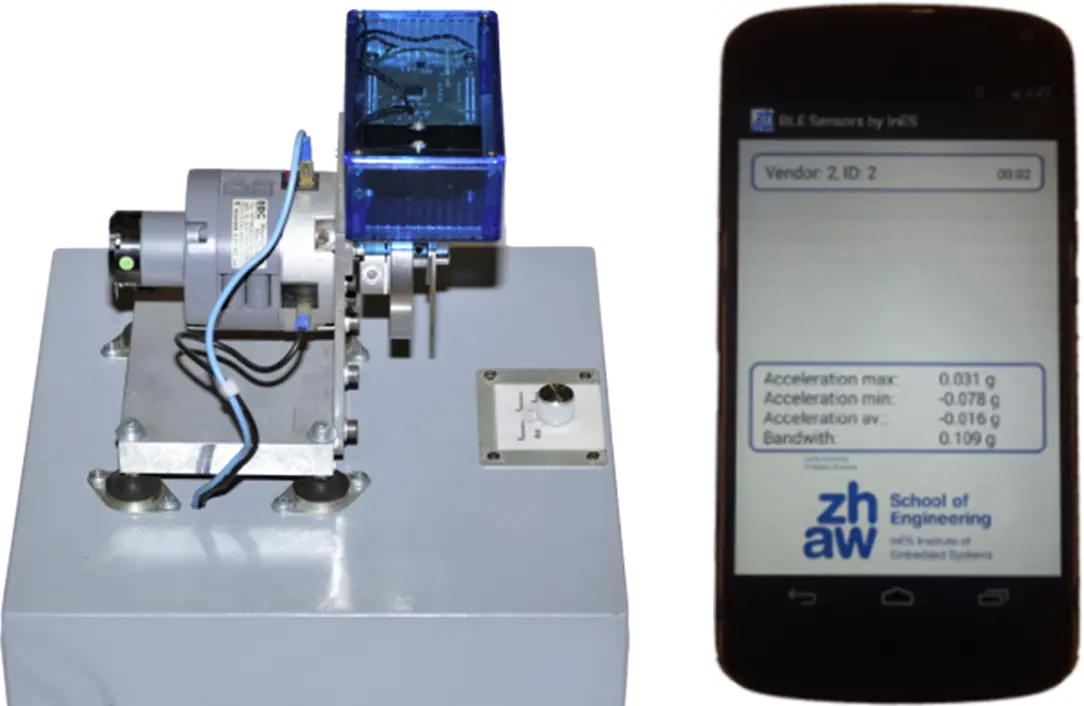
Condition Monitoring System for Industrial Drives
The condition monitoring system harvests energy from the motor vibrations allowing it to operate sensors, a microcontroller, and a radio.
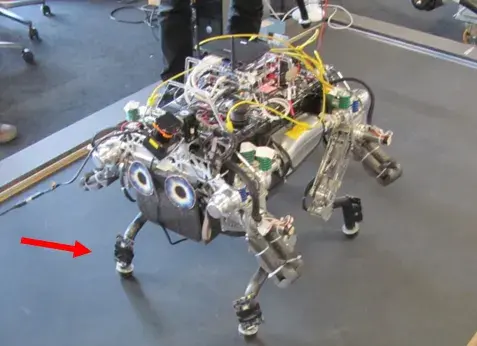
Wireless Body Area Network for Autonomous Robots (roboBAN)
The wireless body area network is designed for energy harvesting and reaches a sufficient transmission reliability and frequency for closed-loop control applications.
Cooperation for Complete Business Solutions
Autarkic systems allow the realization of various solutions. The integration into larger communication networks or distributed systems opens up further possibilities. Through close cooperation with other affiliated research units, we can realize the entire solution chain, from self-sufficient sensors to the data transmission and data processing and to the resulting action, for different problem areas.
Together with the “Internet of Things” research group we can realize distributed autonomous systems and sensor networks.
We are involved in research platforms, which combine the capabilities of several institutes and research areas. Together with our research partners we can cover the entire topics of: